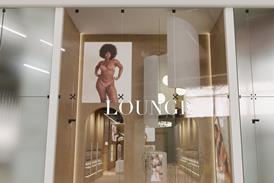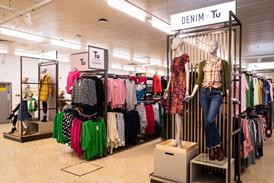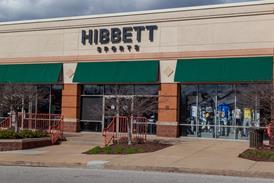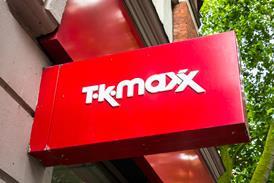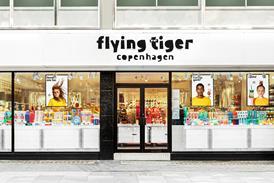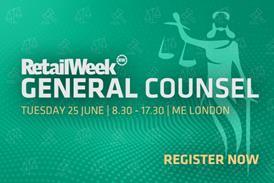Close menu
-
Home
- Back to parent navigation item
- Home
- JOIN TODAY
- Subscribe now
- News
- Sectors
-
Companies
- Back to parent navigation item
- Companies
- Full A-Z list of retail companies
- ABC
- DEF
- GHI
- JKL
- MNO
- PQR
- STU
- VWX
- YZ
- Abercrombie & Fitch
- Adidas
- Ahold Delhaize
- Aldi
- Alibaba
- Allbeauty
- AllSaints
- Amara
- Amazon
- Ann Summers
- Anthropologie
- AO
- Apple
- Argos
- Asda
- Asos
- B&M
- B&Q
- Bathstore.com
- Beales
- Better Bathrooms
- BHS
- Birchbox
- Blacks
- Blue Inc
- Boden
- The Body Shop
- Boohoo
- Booker
- Booths
- Boots
- Boux Avenue
- BrandAlley
- Bravissimo
- BrightHouse
- Bunnings
- Burberry
- Burton
- Card Factory
- Carpetright
- Carrefour
- Casper
- Cath Kidston
- Charles Tyrwhitt
- Charlotte Tilbury
- Childrensalon
- Claire's
- Clarks
- Clintons
- Coast
- The Co-operative Group
- Crew Clothing
- Currys
- CVS
- Debenhams
- Deliveroo
- DFS
- Dobbies Garden Centres
- Dorothy Perkins
- Dreams
- Dune
- Dunelm
- Eataly
- eBay
- Edinburgh Woollen Mill
- The Entertainer
- Estee Lauder
- Evans Cycles
- Farfetch
- Fat Face
- Feelunique
- Fenwick
- Finery
- Flipkart
- Flying Tiger Copenhagen
- Footasylum
- Fortnum & Mason
- The Fragrance Shop
- Frasers Group
- Furniture Village
- Game
- Gap
- Global Fashion Group
- Glossier
- Go Outdoors
- Green Man Gaming
- Greggs
- Gymshark
- H&M
- Halfords
- Hamleys
- Harrods
- Harvey Nichols
- HMV
- Hobbs
- Hobbycraft
- Holland & Barrett
- Home Bargains
- The Home Depot
- Homebase
- Hotel Chocolat
- Houseology
- House of Fraser
- The Hut Group
- Iceland
- Ikea
- Inditex
- In The Style
- Jack Wills
- Jaeger
- JC Penney
- JD.com
- JD Sports
- Jessops
- Jigsaw
- John Lewis
- Joules
- Jumia
- Just Eat
- Karen Millen
- Kingfisher
- Kroger
- Kurt Geiger
- Lakeland
- Lego
- Levi’s
- Liberty
- Lidl
- LK Bennett
- LloydsPharmacy
- Loaf
- Loblaw
- Lovehoney
- Lowe’s
- Lululemon
- Lush
- LVMH
- Majestic Wine
- Mamas & Papas
- MandM Direct
- Maplin
- Marks & Spencer
- Matalan
- Matchesfashion.com
- Mercadona
- Metro Group
- Mint Velvet
- Missguided
- Miss Selfridge
- Monsoon Accessorize
- Moonpig
- Morleys
- Morrisons
- Moss Bros
- Mothercare
- Mountain Warehouse
- Mulberry
- N Brown
- Naked Wines
- Natura
- New Look
- Next
- Nike
- Nordstrom
- Notonthehighstreet
- Oak Furniture Land
- Oasis Warehouse
- Ocado
- Office
- Office Outlet
- Oliver Bonas
- The Original Factory Shop
- Outdoor and Cycle Concepts
- P&G
- Peacocks
- The Perfume Shop
- Pets at Home
- Pets Pyjamas
- Phase Eight
- Poundland
- Poundworld
- Pret a Manger
- Primark
- Quiz
- QVC
- The Range
- Reiss
- Reliance Retail
- Rent the Runway
- Richer Sounds
- River Island
- Robert Dyas
- Ryman
- Sainsbury's
- Schuh
- Screwfix
- Scs
- Seasalt
- Secret Sales
- Selfridges
- Sephora
- Shoe Zone
- SilkFred
- Simba
- Smyths
- Sofa.com
- Sofology
- Sosandar
- Shein
- Space NK
- Spar
- Sports Direct
- Starbucks
- Store Twenty One
- Studio Retail
- Suning
- Superdrug
- Superdry
- Sweaty Betty
- Tapi Carpets
- Target
- Ted Baker
- Tencent
- Tesco
- TJX
- TK Maxx
- TM Lewin
- Topps Tiles
- Toys R Us
- Trouva
- Unilever
- Uniqlo
- Urban Outfitters
- The Very Group
- Victoria Plum
- Waitrose
- Walgreens Boots Alliance
- Walmart
- Waterstones
- Whistles
- The White Company
- White Stuff
- WHSmith
- Wickes
- WiggleCRC
- Wilko
- WoolOvers
- Woolworths SA
- The Works
- Yoox Net-a-Porter
- Yours Clothing
- Zalando
- Zara
- Roles
- Intelligence
- Events
- About us
- Subscribe now
- Retail Navigator
Lining up an Olympic opportunity
By Rebecca Thomson2011-07-04T00:00:00

Source: HayesDavidson
With less than three months before opening, Rebecca Thomson visits Westfield Stratford as it prepares for the 2012 games to commence
Already have an account? Sign in here


